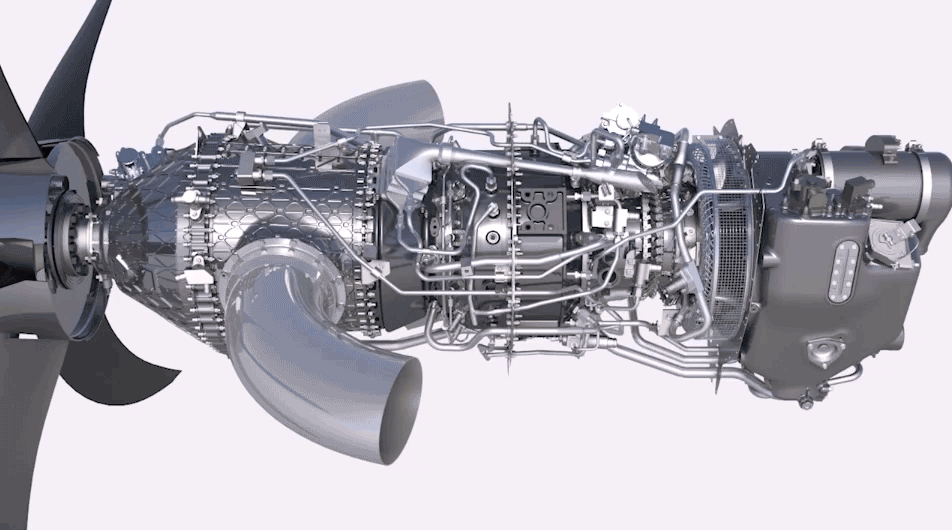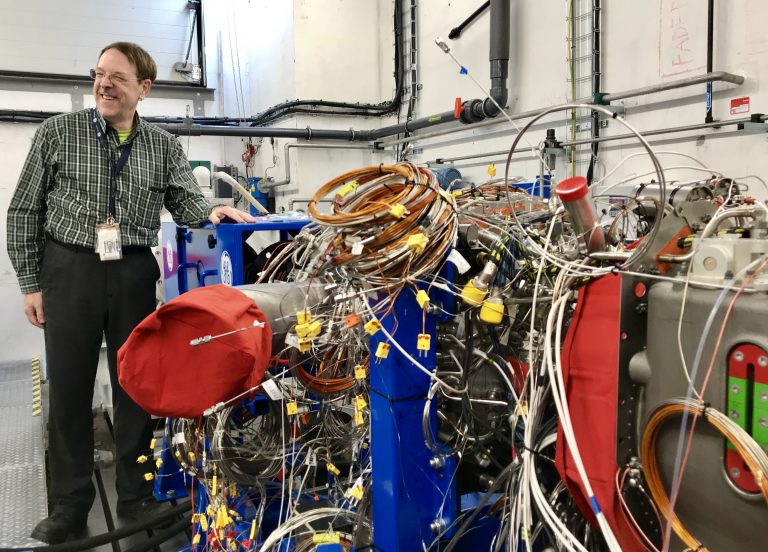GE has announced the successful test-fire of its Advanced Turboprop (ATP) Engine at a GE Aviation test cell near Prague, Czech Republic. Around a third of the ATP engine, which has been in development for the past two years, consists of 3D printed titanium parts, making it the first commercial aircraft engine to do so.
Following this round of testing, the ATP is set to undergo two further years of testing before it can be certified for passenger flight. Textron Aviation’s new Cessna Denali will be the first aircraft to use the engine.
The ATP engine
3D Printing Industry took a close look at the ATP engine in July 2017. The use of 3D printing technology has allowed 855 separate components to be reduced to 12. This, in turn, has reduced the mass of the engine by around 100 lb (45.4 kg), improve fuel burn by up to 20 percent, increased power by 10 percent, and made engine maintenance simpler.
Components such as variable vanes, usually restricted to supersonic engines, were added to the engine’s compressor thanks to 3D printing, allowing for a more efficient flight at higher altitudes.
Importantly, 3D printing facilitated the integration of the ATP’s full authority digital engine control (FADEC), which allows the pilot to fly with a single lever instead of the regular three needed for a turboprop engine, making the flying experience like that of a jet.

The testing process
The ATP engine was assembled at the GE Aviation facility and moved to the test cell prior to Christmas 2017. A boxy water brake was used to simulate the torque forces caused by the propeller, with air tubes, fuel pipes and an exhaust added to simulate functional conditions.
The condition of the engine was monitored throughout the test-fire by sensors and cameras. The results of these were then compared to earlier tests performed separately on individual components.
Following the successful completion of this test, GE engineer Stephen Erickson and his team will continue to perform further assessments, including high altitude simulation later this year. 12 ATP test vehicles will be built and tested across cells in Europe and Canada.
“This is a pivotal moment,” ATP general manager Paul Corkery told GE news. “We now have a working engine. We are moving from design and development to the next phase of the program, ending with certification.”
In October 2017, GE completed testing on its Black Hawk Turboshaft engine for military helicopters.

Nominations for the second annual 3D Printing Industry Awards are now open. Make your selections now.
For more stories on aerospace applications for 3D printing, subscribe to our free 3D Printing Industry newsletter, follow us on Twitter, and like us on Facebook.
Featured image shows Stephen Erickson with the ATP engine. Photo via GE.


